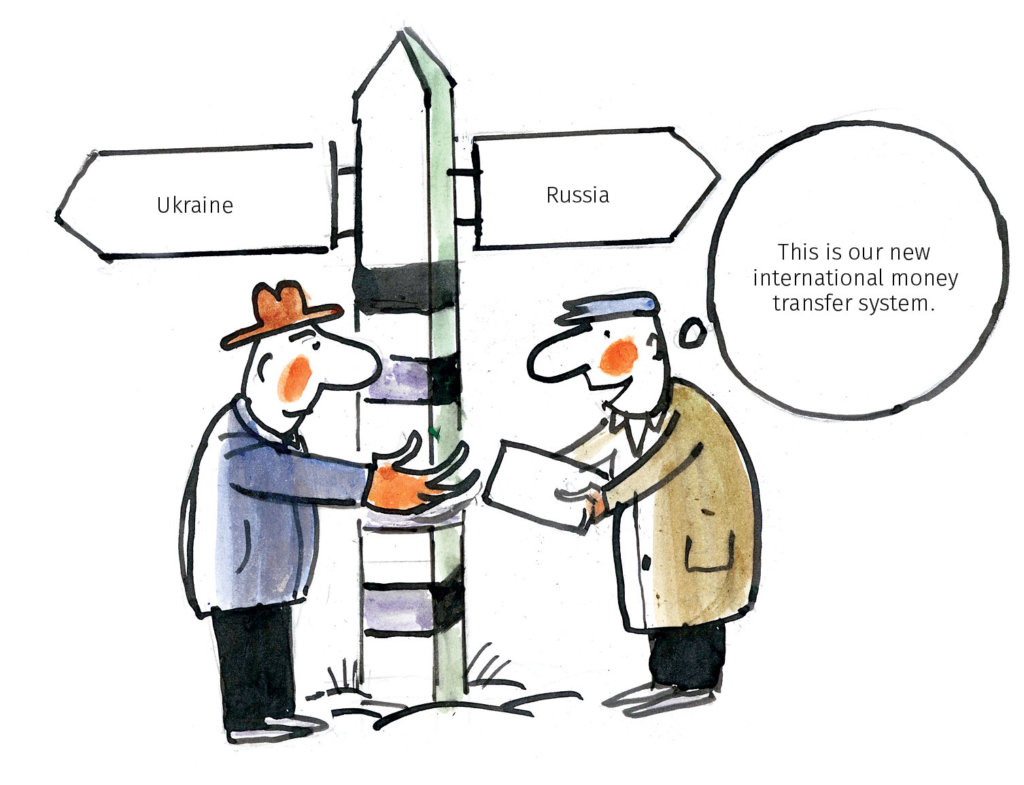Russia has been replaced by Poland as the top destination for Ukrainian migrant workers. But an estimated three million Ukrainians still live and work in Russia and send over a billion dollars in remittances every year.
In the past couple of years, however, it has become harder for them to transfer money. Since Ukraine imposed sanctions against Russian banks and banned Russian money transfers systems, a large portion of remittances flows through unofficial channels.
JOIN US ON TELEGRAM
Follow our coverage of the war on the @Kyivpost_official.
War, migration, sanctions
Ukraine has the lowest wages in Europe, and many Ukrainians find better job opportunities abroad. The Kyiv-based Center for Economic Strategy estimated that some 4 million Ukrainians left the country for work in 2015–2017, and about one third of them were seasonal workers.
The remittances from Ukrainian migrant workers are high too. Last year, they sent home $9.3 billion in total, according to the National Bank of Ukraine, equal to some 9 percent of the country’s gross domestic product. In 2018, the remittances are expected to surpass $11 billion.
Poland has recently become the top destination for “zarobitchany,” Ukrainian seasonal workers, as more people take advantage of visa-free regime with the European Union introduced in mid‑2017 and go for short-term work.
But Russia remains popular too despite the Kremlin’s war against Ukraine. The ongoing fighting in the Donbas and severed diplomatic and travel links — there are no flights between the two countries since 2015 — don’t deter many Ukrainians from going to Russia for work due to the absence of a language barrier.
There is no exact data on the number of Ukrainians working in Russia, government officials and researchers only give approximate estimates. According to the Center for Economic Strategy, 3.2 million Ukrainians moved to Russia between 2002 and 2017, and this number corresponds with words of Ukraine’s Foreign Minister Pavlo Klimkin.
“Three million Ukrainians live in Russia. Many of them don’t love Putin and Russia but reckon they don’t have another choice. They say: ‘We make a living here,’ and we have to understand them, ” Klimkin said in April.
As per NBU statistics, remittances from Russia accounted to $1.3 billion in 2017 but the real figures are said to be three times higher, since many short-term seasonal workers either bring their earnings themselves or send money to their families through unofficial channels.
The NBU admits that the discrepancy was caused by the ban on Russian money transfer services. Since October 2016, Ukraine made illegal seven of them: Blizko, Anelik, Zolotaya Korona, Leader, Unistream, Colibri, and Contact. Before the ban, half of all remittances from Russia to Ukraine were sent through those systems.
Registered in the United Kingdom money transfer system MoneyTo also found itself on the ban list before it was able to enter Ukrainian market because its owner, a Russian-British entrepreneur George Piskov, happened to be a co-founder of Unistream.
Online payment systems WebMoney, Yandex Money, and Qiwi were also blacklisted.
In response, Russia limited cash transfers to Ukraine through Western Union and Moneygram — now a sender must have an account or a card from a Russian bank.
In a conversation with the Kyiv Post, a former manager of one of the banned Russian systems — who refused to be identified — suggested that the ban could have been lobbied for by the American system Western Union, which was losing out the competition in Ukraine to Russian money transfer systems with lower commission fees.
Official and unofficial channels
There are currently a few legal ways to transfer money from Russia to Ukraine and vice versa, but they are considered pricey.
The first is to transfer money from a bank account in Russia to a bank account in Ukraine using SWIFT international payment system. It costs at least $20. The second is to open a bank account in a Russian bank and transfer money through Western Union and Moneygram systems with about 1 percent commission. The third way is through a postal operator with even higher charges: up to 5 percent from the sum of transfer.
“We have to remember that it’s mainly our zarobitchany who send money home to their families. Not all of them are ready to use ultra-modern channels but they need legal, secure, and inexpensive ways,” said Maryna Revutska, deputy head of the retail business department at Oschadbank, in an interview with the Kyiv Post.
According to her, the average check sent from Russia to Ukraine is $400–450 and from Ukraine to Russia — $200.
She added that identification requirements are still strict by Ukrainian legislation. To receive a money transfer, a person has to present a passport. “Money transfers are usually not big sums of money, and we would like a simplified identification with a driving license or any other ID document,” Revutska said.
In the absence of cheap money transfer options, more people have resorted to informal ways. For instance, cash is transferred through so-called agents. For a small pay, bus drivers or train conductors who often travel between Ukraine and Russia can deliver envelopes with cash to migrant’s relatives.
Another semi-legal way is to open an account in a Russian bank that has a branch in Ukraine, for example, Sberbank. The card is handed over to a family member in Ukraine who can withdraw money from Sberbank’s ATMs without fees.
But this may not be an option soon. Sanctioned Russian state-owned banks are leaving Ukraine. Sberbank sold its VS Bank to Ukrainian banker Serhiy Tigipko’s TAS Group and is looking for a buyer for its subsidiary Sberbank-Ukraine. Vnesheconombank is also selling its Ukrainian subsidiary, Prominvestbank. VTB closed down most of its branches in Ukraine, and BM Bank decided to give up its banking license.
After the ban came into force, the amount of money transferred through international transfer systems dropped by two times, from $811 million in 2016 to $444 million in 2017. At the same time, money transferred through informal channels has doubled from $680 million in 2015 to almost $1.3 billion in 2018.

TYME is out
There are ways to circumvent the ban through an intermediary money transfer system. However, it is risky.
In June, one of the leading Ukrainian money transfer systems TYME lost its license after the Security Service of Ukraine reportedly found that it had worked with one of the banned Russian money transfer systems Contact.
The company denied the allegations and called the NBU decision too harsh, but followed the order and shut down its operations. Reached by phone, TYME director Vitaliy Petruk refused to talk to the Kyiv Post.
Today, TYME is a cautionary tale to those few money transfer systems operating in Ukraine — Welsend, Ria, Meest, Khazri, and Intel Express.
“The money transfer sector always changes. What worked yesterday, may not work today,” Ukrainian citizen Vladimir Goryachev, who had experience of receiving some payments for his services, told the Kyiv Post.
“I once had money sent by a client from Toliatti (a city in western Russia) through one money transfer system. Next time I checked, it had been banned in Ukraine. But people find ways because they have relatives (in Russia) or do business there. If one system is blocked, another one will appear.”
Going online
Besides account-to-account transfers, some Ukrainian banks allow transfers of money from one bank card to another, including Visa, Mastercard, and Maestro cards issued by Russian banks.
The ban gave a boost to a number of online tools such as Paysend.com and Send2UA.com as well as to a few Ukrainian alternatives — LiqPay from PrivatBank, Portmone, and iPay.ua which also offer quick and cheap online card-to-card transfers.
“This part is untouched because Russian banks pretend it is hard for them to control these kind of transfers. In reality, it is not hard to limit card-to-card transfers,” said Alexander Karpov, head of Ukrainian interbank association of payment systems EMA, adding that he fully supported the position of NBU.
As the labor migration from Ukraine is shifting towards Western economies such as Europe, Israel, and the United States, young Ukrainians turn to new services such as TransferGo and TransferWise.
UK-registered TransferGo created by Lithuanian developers launched online money transfers to Ukraine a little over a year ago. Today, over 70,000 Ukrainians use it to send money — 200 euros on average — from Poland, Hungary, Lithuania, Germany, and Denmark.
“In eight months the total number of transactions from Europe to Ukraine increased by four times compared to last year,” Anastasya Fomenko, TransferGo growth manager for Ukraine told the Kyiv Post.
You can also highlight the text and press Ctrl + Enter




